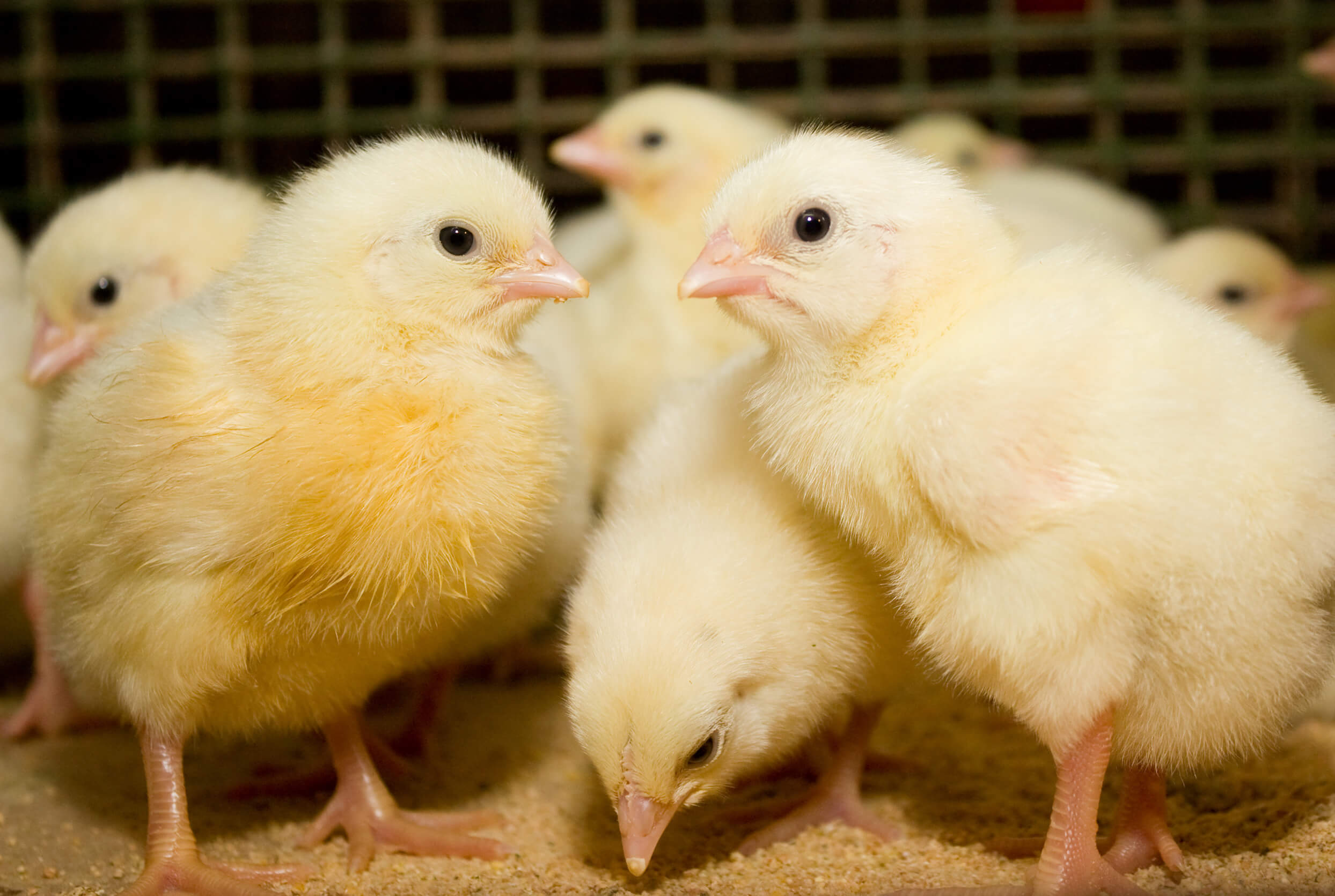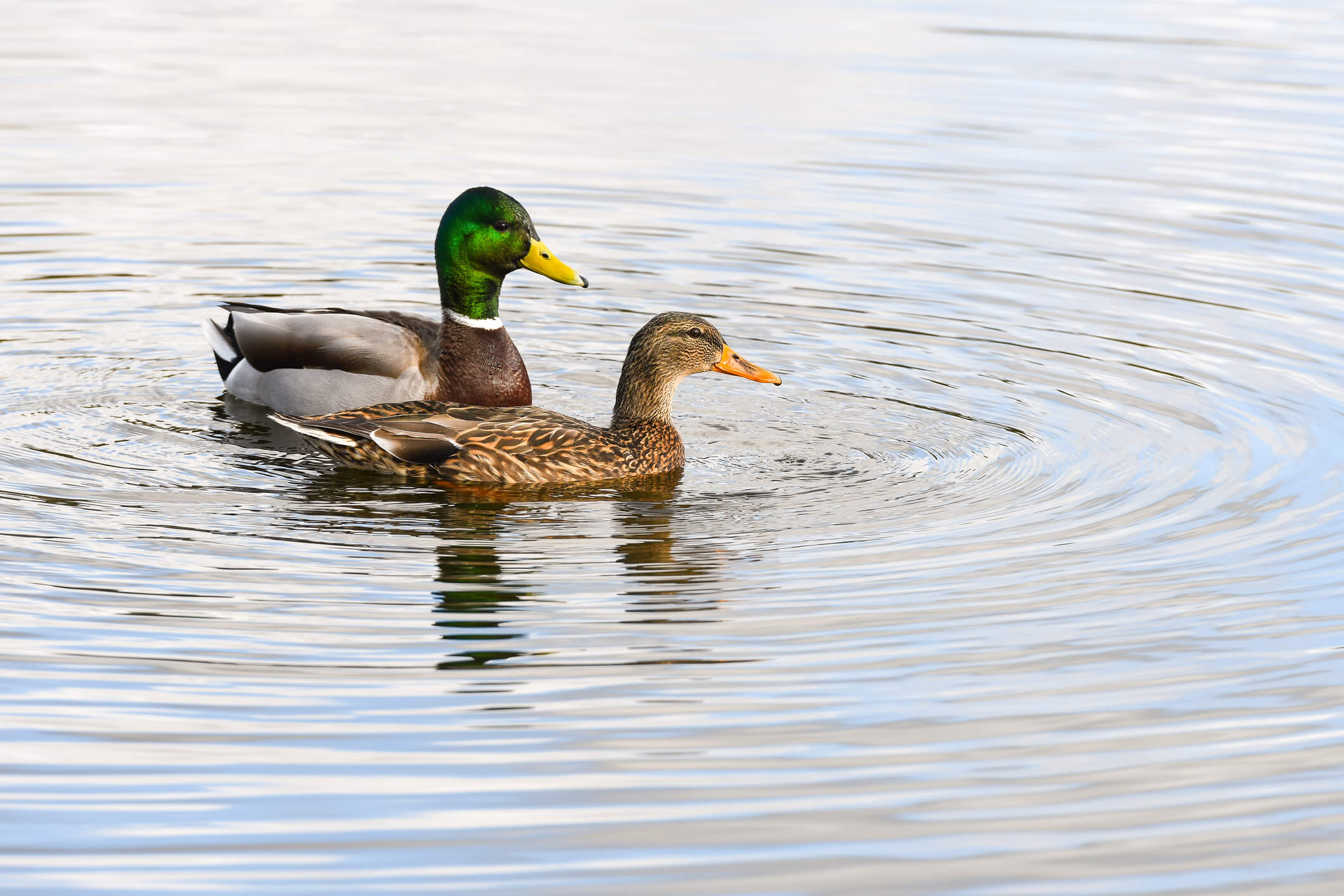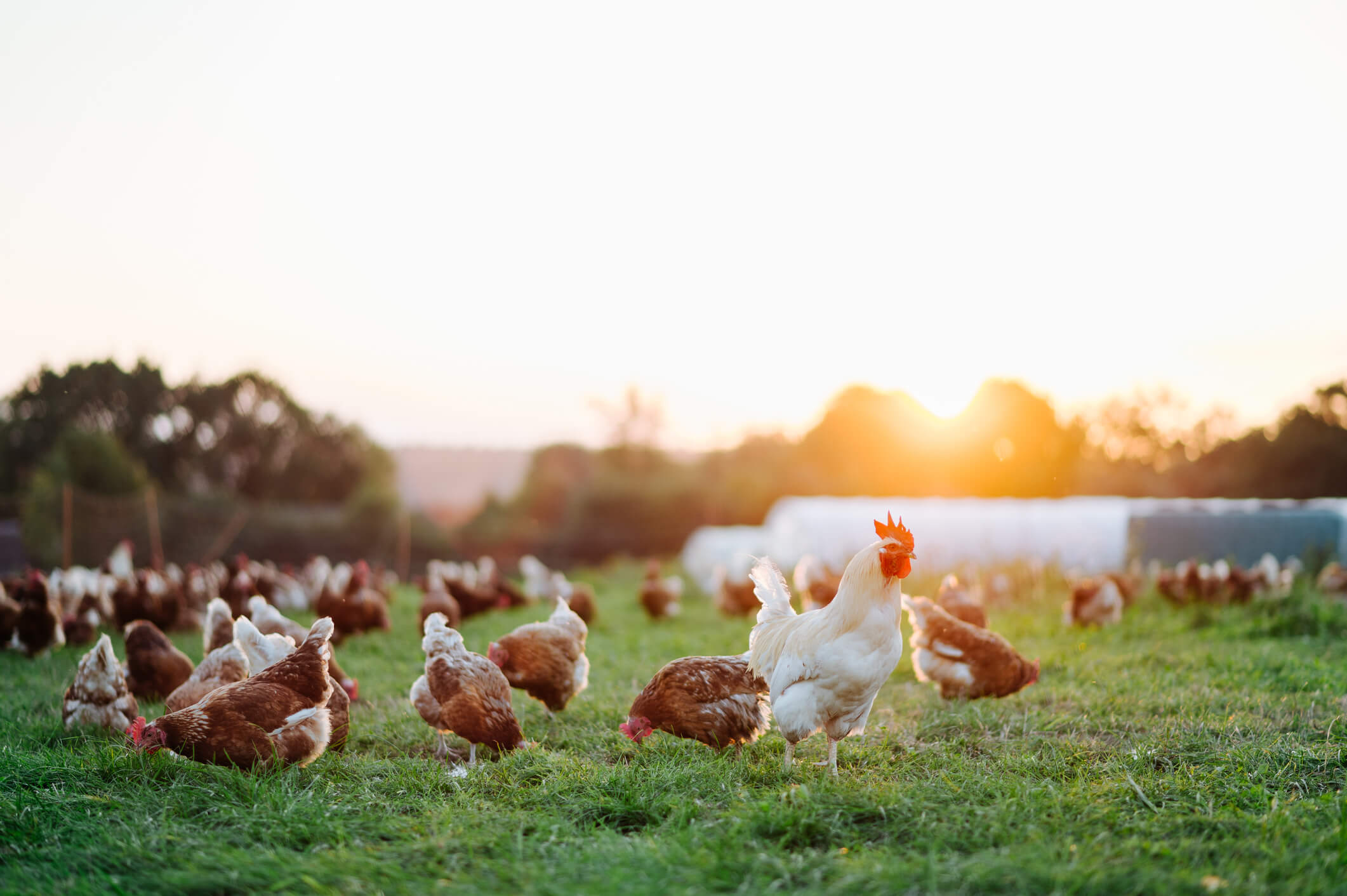Poultry Health Program
Who We Are and What We Do
The primary focus of MDA's Poultry Health Program is to administer the National Poultry Improvement Plan (NPIP). The NPIP is a state-federal-industry cooperative program that began in the 1930s to coordinate state efforts to eliminate pullorum disease from poultry breeder flocks and hatcheries. Since the program’s inception, NPIP has added more provisions and has changed to meet the needs of the poultry industry.
The Poultry Health Program plays an important role in ensuring the health and marketability of Missouri poultry flocks by conducting disease surveillance activities. In addition, the Poultry Health Program works with mail order hatcheries, feed stores, and farm & home stores to educate their customers on safe handling of poultry to help prevent salmonella illness in humans. The Poultry Health Program provides educational outreach on biosecurity, safe handling practices and quarantining after exhibition at poultry shows throughout Missouri.



National Poultry Improvement Plan (NPIP)
Benefits of the NPIP:
- Aids in ease of interstate movement of poultry and poultry products
- Recognized in all states
- Provides uniform terminology for program disease classifications
- Contact the Poultry Health Program with the Missouri Department of Agriculture to request an enrollment packet.
- Complete the memorandum of agreement and application in the enrollment packet and return the forms back to MDA.
- A farm visit appointment will be scheduled by a Poultry Health team employee to perform required flock testing, flock inspection, hatchery inspection and/or any other requirements for participation
Frequently Asked NPIP Questions
What is National Poultry Improvement Plan?
- The National Poultry Improvement Plan (NPIP) was started in the 1930s to coordinate state efforts to eliminate pullorum disease from poultry breeder flocks and hatcheries. Since then, it has grown to include all types of poultry production.
- The NPIP is administered by the Missouri Department of Agriculture under the guidance of the United States Department of Agriculture.
- It is a voluntary program for Missouri poultry producers.
- Pullorum is a bacterial disease of poultry transmitted from a hen to her chicks via the egg.
- The causative organism is Salmonella pullorum.
- The organism is transmitted through the egg, but there are other routes of introduction, such as:
- Mechanical transmission such as people, clothing and equipment.
- Contaminated surfaces such as buildings, feeders and equipment.
- The main reservoirs of pullorum infection are egg-producing organs of the infected hen.
- Male birds can be carriers of the organism.
- Pullorum is a disease that can affect chickens, turkeys, ducks, geese, quail and other birds.
- Antibiotics will not cure a bird from pullorum.
- The testing method is called Rapid Whole Blood Plate Test.
- A drop of blood is collected from the “elbow” of the wing.
- The blood is mixed with an antigen to check for Salmonella pullorum antibodies.
- Each drop of blood requires a two-minute reaction time to determine if positive or negative for the disease.
- All birds showing a reaction will be evaluated by further testing.
- If the additional tests are negative, the flock returns to its “clean” disease status.
- If the additional tests are positive for pullorum disease, then the flock is inspected and will be under MDA supervision to prevent the spread of disease to other flocks. The Department will recommend a testing program to help the flock re-enter clean status.
- The birds must be four months or older for any testing to be considered an official NPIP test for Salmonella pullorum.
- Chickens, turkeys, guineas, peafowl, ducks, geese, quail, pheasants, partridges and others.
- No doves or pigeons.
- Once per year for NPIP flocks.
- At exhibition for non-NPIP birds.
- Within 90 days of an event or entry into Missouri for non-NPIP birds.
- There is no charge for program participation or for blood testing.
- Participation is renewed on an annual basis.
Poultry Diseases
There are many diseases that can affect your flock. To keep you flock safe, consider developing a Secure Poultry Supply
Plan.
Small Flock
Biosecurity Plan Brochure
Avian Influenza
Avian influenza viruses, commonly called “bird flu,” are influenza type A viruses that naturally occur in bird populations. The viruses are transmitted from bird to bird through fecal droppings, saliva and nasal discharge. Avian influenza viruses can infect poultry (such as chickens, turkeys, pheasants, quail, domestic ducks, geese and guinea fowl) and wild birds (especially waterfowl). Two serotypes of avian influenza are of concern in the United States, Highly Pathogenic Avian Influenza (HPAI) and Low Pathogenicity Avian Influenza (LPAI).
Highly Pathogenic Avian Influenza (HPAI) is a serious disease and requires rapid response because it is highly contagious and often fatal to chickens. The goal is to quickly contain and eradicate the disease, protecting the poultry industry, and in turn, consumers.
If you notice any of the signs below in your flock please contact one of our poultry program team members at the Missouri Department of Agriculture.
- Decrease in water or feed consumption
- Respiratory signs, such as coughing and sneezing
- Quietness among the flock
- Decrease in egg production
- Sudden increase of death in your flock
Avian Influenza Flyer
There have been occasional HPAI outbreaks in the United States. Information regarding the current HPAI status in Missouri can be found here.
Low Pathogenicity Avian Influenza (LPAI) viruses typically cause little or no clinical signs in infected poultry. The LPAI virus is excreted through infected bird feces and respiratory secretions. It spreads primarily through direct contact between healthy and infected birds. It can also be spread through indirect contact with contaminated equipment and materials. Low Pathogenicity Avian Influenza (LPAI) virus strains occur naturally in wild migratory waterfowl and shorebirds without causing illness.
Mycoplasma
Mycoplasma are bacteria-like microorganisms that cause disease in poultry and can be spread through
bird-to-bird contact, egg or hatchery transmission, or contact with contaminated equipment. Mycoplasma
species that cause significant problems in poultry are Mycoplasma gallisepticum, Mycoplasma
meleagridis and Mycoplasma synoviae. Mycoplasma in poultry is not a public health concern, but can be
a significant disease issue for breeder flocks, hatcheries and poultry producers.
- Mycoplasma gallisepticum (MG): Commonly known as chronic respiratory disease in chickens and infectious sinusitis in turkeys, Mycoplasma gallisepticum (MG) is characterized by coughing, nasal discharge and conjunctivitis, and frequently in turkeys, infraorbital sinusitis. MG is the most pathogenic and economically significant form of Mycoplasma.
- Mycoplasma meleagridis (MM): Mycoplasma meleagridis primarily causes an egg-transmitted infection in turkeys that leads to airsacculitis in the offspring. It does not affect chickens, and control programs have successfully eliminated it from commercial turkey flocks in many countries. Signs include reduced hatchability of eggs and poor poult growth rates. Diagnosis is by serology, culture or real-time PCR. Control is maintained by obtaining eggs or poults from breeders free of M meleagridis and practicing strong biosecurity.
- Mycoplasma synoviae (MS): Mycoplasma synoviae (MS) infections are most likely to cause upper respiratory infections or infectious synovitis involving the joints and tendons of the birds. At other times, MS becomes systemic and results in chronic infectious disease of chickens and turkeys. MS, as with other Mycoplasma species is an egg-transmitted disease which has the potential to become widespread in a short time period without proper and timely breeder flock surveillance.
ILT
Infectious laryngotracheitis (ILT) is a highly contagious respiratory disease that mainly causes
illness in chickens, peafowl and pheasants. Waterfowl, other animals and humans are not affected. ILT
is commonly spread when a bird that has been exposed to ILT or vaccinated for ILT is brought into a
flock. ILT can also be spread on equipment (cages, vehicles, waterers, etc.) or on shoes, hands and
clothes. Symptoms of ILT can include difficulty breathing, coughing, sneezing, watery/crusty eyes, or
yellow/bloody mucus coming from nose or throat. The symptoms can range from mild to severe and may
cause death.
Avian Metapneumovirus
Avian metapneumovirus (aMPV) is a viral upper respiratory disease in poultry including turkeys,
broilers, layers and breeders. aMPV may also affect other poultry and avian species such as pheasants,
Muscovy ducks, pigeons and various wild birds. Symptoms of aMPV include mild respiratory signs
(snicking/sneezing, nasal discharge), swollen sinuses and a weakened immune system. It can cause
secondary opportunistic bacterial infections. Secondary infections can lead to swollen heads,
torticollis and neurologic signs. Birds in egg production can experience mild to severe drops in
production.
Salmonella
Salmonella infections are classified as nonmotile serotypes ( S enterica Pullorum and S
enterica Gallinarum) and the many motile paratyphoid Salmonella. These Salmonella infections have worldwide
distribution. As a result of the institution of a testing and control program in the USA through the
USDA-administered National Poultry Improvement Plan, the incidence of S
enterica Pullorum or S enterica Gallinarum infection has decreased dramatically. Historically, S
enterica Arizonae was placed in its own category, but it is now included with the paratyphoid
Salmonella. S enterica Arizonae is an egg-transmitted disease primarily of young turkeys. In addition
to the above nonmotile salmonellae, Salmonella paratyphoid infections in poultry are relatively common
and have public health significance because of contaminated poultry product consumption.
S enterica Pullorum and S enterica Gallinarum are highly host-adapted to chickens and turkeys.
Pullorum disease is caused by Salmonella enterica Pullorum and is characterized by very high mortality
in young chickens and turkeys. Affected birds huddle near the heat source, are anorectic, weak,
depressed, and have white fecal material pasted to the vent area. In addition, the birds may have
respiratory disease, blindness, or swollen joints. Fowl typhoid is an infectious poultry disease
caused by the bacterium Salmonella gallinarum. The disease affects mainly mature or growing chickens,
but has the ability to affect all chickens, ducks, grouse, guinea-fowl, peafowl, pheasants, quail and
turkeys. Symptoms are similar to those seen in pullorum disease and include anorexia, decreased egg
production, poor hatchability, depression, diarrhea and increased mortality.
Poultry Biosecurity
One of the best ways to protect your animals, whether pets, livestock or poultry, from getting sick is to practice good biosecurity. Biosecurity is another way of saying “infectious disease control.” Biosecurity includes actions that keep diseases, and the germs that cause them (viruses, bacteria, funguses, parasites and other organisms), away from animals, property and people. Whether animals are on the farm, moving from one site to another, going to auction, participating in a show/event, or are part of the agrotourism industry, biosecurity is critical in protecting the food supply for Missouri and our nation.
Diseases can be spread through physical contact, by contamination of inanimate objects (clothing, boots, vehicles, equipment, etc.), through inhalation of the disease agent in aerosolized droplets, and by consumption of contaminated food or water. Biosecurity practices reduce the risk of transmission.
The basics of biosecurity are listed here.
NPIP 14 Points of Biosecurity:
Following the 2014-2015 HPAI outbreak in the United States, biosecurity measures were developed and added into the NPIP Program Standards. These biosecurity measures are intended to be the basic management practices needed to prevent the introduction and spread of diseases. These biosecurity measures can be applied to both commercial and backyard production, but only commercial operations undergo the audit process.
NPIP 14 Points of Biosecurity
For the backyard operations, consider creating a biosecurity plan following the 14 points that are outlined in the Small Flock Biosecurity Plan.
Biosecurity for Exhibition:
Exhibiting poultry can be rewarding and fun, but you don’t want to bring sickness home. Here are some recommendations on keeping your birds safe during show season.
- Quarantine your exhibition birds from your other birds for a minimum of 14 days.
- Quarantine birds in separate areas/pens away from other birds.
- Feed and water quarantined birds last.
- Don’t share equipment or supplies used on quarantined birds with other birds.
- Clean and disinfect pens/cages, show boxes, and other equipment after quarantine.
- Always wash your hands and disinfect shoes/boots after handling or working with quarantine birds.
Import and Exhibition Regulations
Health Requirements for Movement of Poultry
Import Regulations
- Requirements for importing hatching eggs and poultry into Missouri:
- CVI or VS Form 9-3 is required.
- Entry permit is required. To obtain a one-time entry permit please contact (573) 751-3377. If interested in an annual-entry permit, please contact the Poultry Health Program staff to receive an application.
- Poultry entering Missouri must test negative for pullorum within 90 days of entry, or must originate from a NPIP-approved flock tested within the past 12 months with no change of ownership.
- Hatching eggs must be accompanied by a CVI certifying the eggs are from a pullorum free flock, or by a VS Form 9-3.
Interstate
- Poultry must be free of clinical signs of illness.
- A CVI, VS Form 9-2 or a similar certificate is required and must accompany the poultry to exhibition, and must be made available upon request.
- Poultry must have a PT test within 90 days of entry into Missouri, or must originate from a NPIP-certified flock.
- Entry permit is required. To obtain an entry permit, please contact (573) 751-3377.
- Poultry must be free of clinical signs of illness.
- A PT test is required (except MO origin waterfowl).
